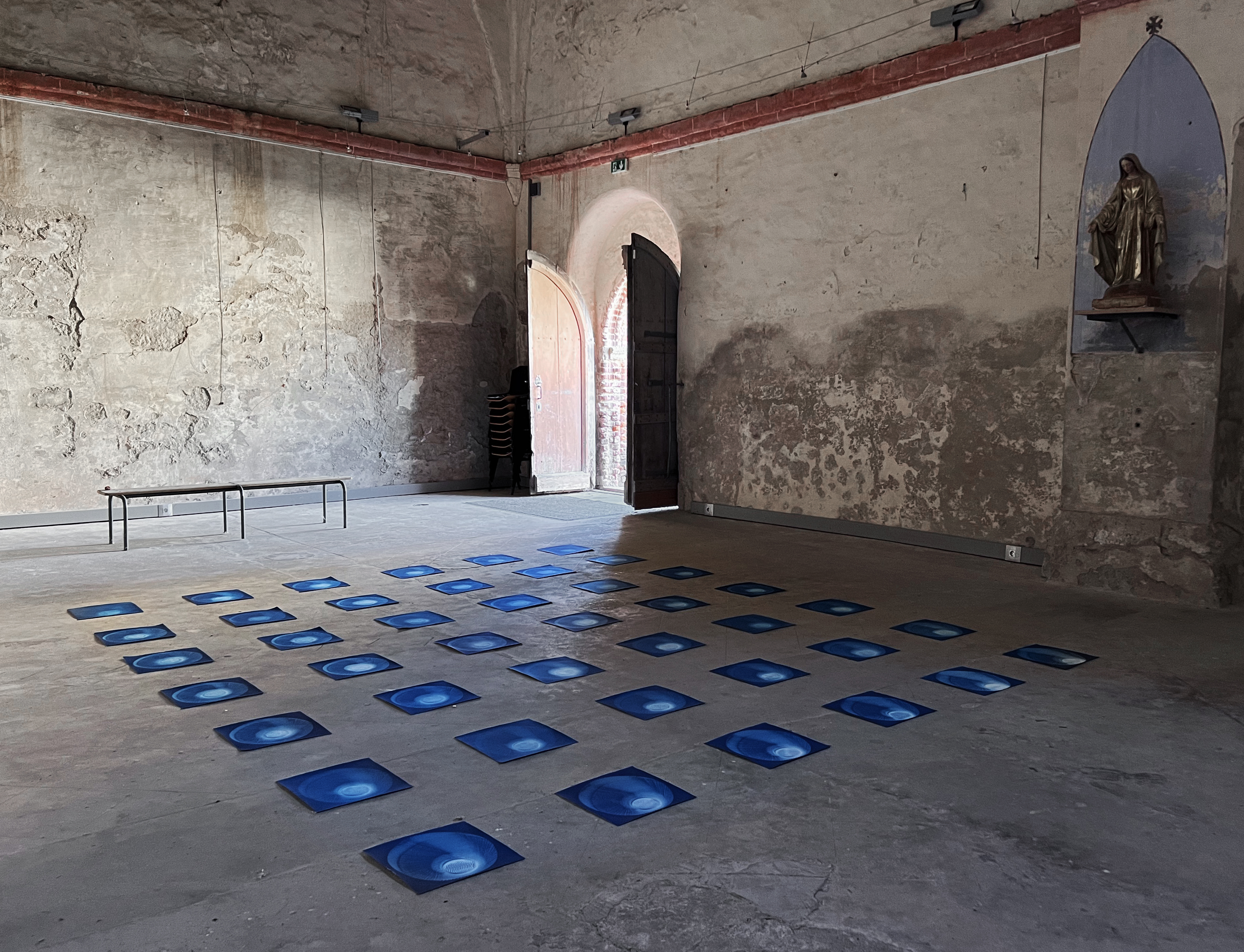La Chapelle Sainte Catherine
Le Port, Auvillar
France
Aftermath Series: La Rituelle which was created in Le Port, Auvillar in France at La Chapelle Sainte Catherine. For this site-specific project, the marking of time in sacred space was traced through Cyanotypes. This process produces monochrome imagery applicable on a range of support surfaces rendering them light sensitive. It has a low impact environmentally, using a 1:1 mixture of ferric ammonium citrate or oxalate and potassium ferricyanide to coat, dry and expose and water to develop. For the installation, each of the 42 Cyanotypes was created using a found glass bowl filled with milk which were captured by solar exposures in 15 minute intervals during the course of 1 day. The ritual, presented as performance, evolved from proceeding research, a deep exploration of the history in the area and many process trials with Cyanotype as well as other ritual-based interventions. This installation and the materials and process used to create the work was in direct response to Sainte Catherine, the patron saint of this chapel, who was said to have used milk as a symbol for Christ’s blood. This work, among other pieces created took place during my 5 weeks in residence as a Fellow at the VCCA-France Moulin à Nef International Residency program.
Ritual has always played a pivotal role in my work. Many of my exhibitions, especially those that are site-referential, have their foundation in rituals that explore a nuanced spirituality and have taken place in cathedrals and sanctuaries around the world. This sense of wonder and a curiosity in the nature of mystery initially stems from experiences as a child living next to the Chartres Cathedral. It was unforgettable the first time I entered the cathedral, walked the labyrinth incised into the floor in the midst of the liturgical chanting. As I proceeded further into the space, I suddenly noticed the Rose Window which the sun at that moment had illuminated into full brilliance. It was in later research that I discovered if one ‘projects’ the façade onto the stone floor, the center of the rose window – where it is stated that “Christ appears majestically” – corresponds to the center of the labyrinth. This intuited mediation of the space informed in subsequent years how my process unfolds and intertwines as architectural intervention, light projection and the capture and preservation of the moment in print.
My interest in these processes has been in the creation of an interpretive representation of my subject matter that moves beyond direct representation. Within my work I have been interested in exploring the potentials of alternative photography as a time-based medium and its ability to capture the movement of light and to ultimately document the passage of time in the form of a tangible artifact/a type of recorded sundial. While in the studio I am constantly investigating the space between the print and lived experience. This is a daily meditation, many times realised in the act of making a print.
My goals as an artist are to give form to the unseen by building connections through material and process. Through intuitively guided research, connections reveal themselves between the macro and micro. For example: The schematic aspects of the labyrinth experienced earlier in my childhood can be seen by my interest in and utilisation of the design of the atomic model of uranium atoms (please reference image…), perhaps suggesting by its eerily similar structure another type of labyrinthian-based meditative journey, only in this case through the history of a scientific discovery represented in the uranium spheres and its ensuing weaponised use.






